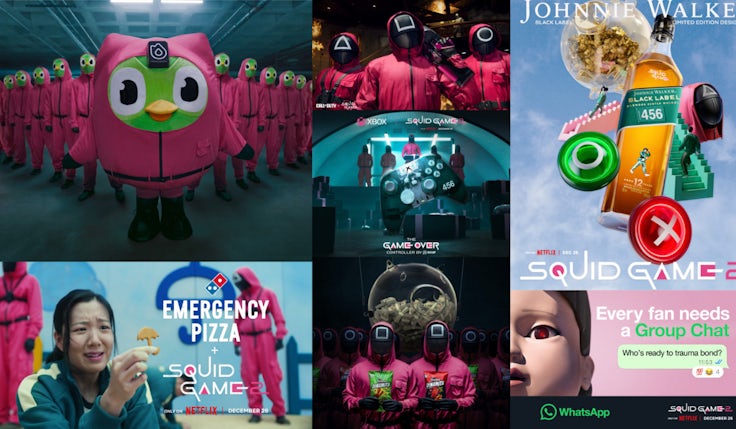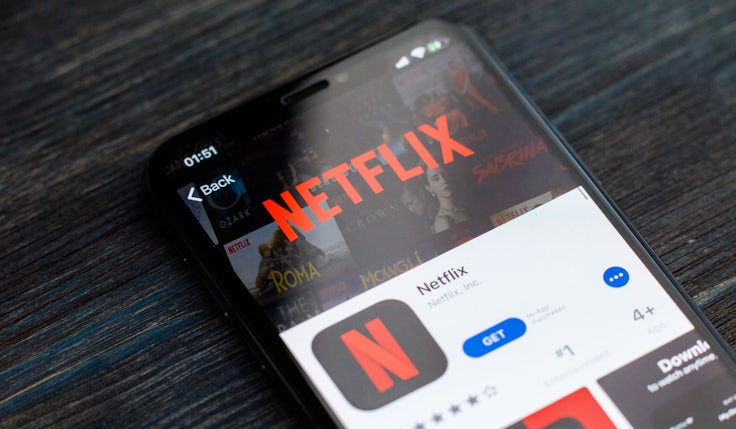‘Cut through in culture’: How Netflix creates ‘effective’ brand partnerships
Brand partnerships are allowing Netflix to create cultural cut through that is helping its biggest shows become cultural moments.

From Emily in Paris and Squid Game to Wednesday and Stranger Things, the millions of eyeballs paying attention to Netflix’s streaming output are increasingly matched by brand interest.
For Jordan Peters, senior director of marketing partnerships for EMEA, brand partnerships work for companies who “are looking to cut through in culture” in a way that’s “super authentic” and creates excitement from fans. But it is not just beneficial for the brand, it helps Netflix increase the profile of its shows as well.
Take Squid Game. One partnership for series two saw it collaborate with KFC, which led to around 750 million impressions across social media and more than 400,000 menus sold in one week. Those eyeballs don’t just go one way.
“It was huge on social, but it also had a material business impact,” Peters tells Marketing Week. “Which is why they’re now back.”
Effective brand collaborations may look off-the-cuff and reactive, but they’re typically planned many months in advance.
“It’s not work we try and turn around overnight. To do it well, you need to produce something that ideally looks like something that came from Netflix in the show itself. That takes a lot more thinking and planning,” he says.
Netflix launched its third – and final – season of Squid Game last month with a range of brand partnerships, from merchandise to gaming integrations. Partners ranged from clothing brands Puma, Pull&Bear and Primark to Diageo’s Johnnie Walker and toy brand Mattel. Helping Netflix hit audiences it might not naturally cater for.
‘Experts in their field’: Netflix on embracing a culture of ‘context not control’
Netflix didn’t expect the show’s first season to be as successful as it was, notes Peters, however its popularity quickly became obvious. “The product figured it out,” he says, referring to Netflix’s data ability. “And that’s what you create franchises from.”
However, sometimes a moment takes off with a life of its own.
For Wednesday – Netflix’s Addams Family comedy – the show had “a lot of campaign beats that were very well thought through and planned a long way in advance”. However, “then something happened” out of Netflix’s control – a fan put a Lady Gaga track over a dance scene, which then went viral.
“The dance in the show became an iconic moment,” says Peters, which Netflix capitalised on by partnering with Gaga herself.
It was a combination of effective planning, and effective reactivity, that helped the dance itself garner more than a billion impressions and create “noise”, says Peters, helping propel the show to be one of the streamer’s biggest hits of that year.
It also highlights the importance of “empowering teams to move fast” when they see something taking off, he says.
While brands can create strong “cultural” moments with Netflix, fans of its properties are aware of when something works – and when it doesn’t.
“For us, it’s super important that whatever we do, a fan looks at it and is glad it exists, because it’s very easy to do something that’s overly commercial and makes people feel like they’re not really sure why these two brands have partnered,” says Peters. “But if you can create something that can only exist because you came together, then that’s something fans respond to.”
Creating effective partnerships
For some brands, a Netflix tie-up may be high on the agenda, but it’s not necessarily going to work for everyone. Explaining what Netflix looks for in its collaborations, Peters says it “admires brands” who have “a voice”.
For it to work, brands need “something about their personality which is bold, playful or risk-taking”, or as Peters puts its, “often, to be honest, funny”.
And, of course, money talks. “There is that truth to it. We look for partners who have the ambition in terms of investment, production quality and are willing to sit around the table with us quite a long way out and plan something,” adds Peters.
Netflix beefs up team and tech to push ad service
It’s “returning seasons” that make the most effective brand partnerships, because of their “established fan base” with a number of consistent shows “big enough to start something magical”.
Wednesday returns in August and the finale of Stranger Things comes out in November. All hot properties for Netflix to market. The latter will be the “biggest entertainment event of the year”, claims Peters.
Foreseeing big cultural moments is Netflix’s “superpower,” he believes, and it’s clearly paying off for the platform. It posted second quarter revenue growth of 16% last week, raising its full-year guidance and recording “healthy” member growth and ad sales.Netflix wants to create ‘buzzier’ marketing as the streaming giant ramps up ad-supported tier
CMOs want their brands to be part of cultural moments, but it’s “harder and harder to do” because of media fragmentation and each person having their “own personal algorithm”.
“Moments are becoming more and more fragmented and more and more niche,” says Peters. This sums up Netflix’s pitch to brands. “I feel like that superpower is something super valuable we can bring to brands in advance when they’re just looking at their calendar thinking, ‘am I going to react to culture in the moment?’”
Social media is the hub for the majority of Netflix’s standout brand partnership moments. “Some brands do it brilliantly,” says Peters, noting marketers’ favourite, Duolingo, in empowering its social team to be creative.
“But not every team can do that, some of them are more risk averse,” he says. His team, working closely with Netflix’s core marketing team, “pick up on signals” when a show is rising in popularity, and work with brands to tap into this.







